Hojicha Jelly is a light, chilled dessert made with roasted green tea powder and kanten (agar). Topped with sweetened condensed milk, these wobbly jelly cubes make a delicious afternoon treat or a refreshing end to your dinner meal. {Vegan-adaptable}
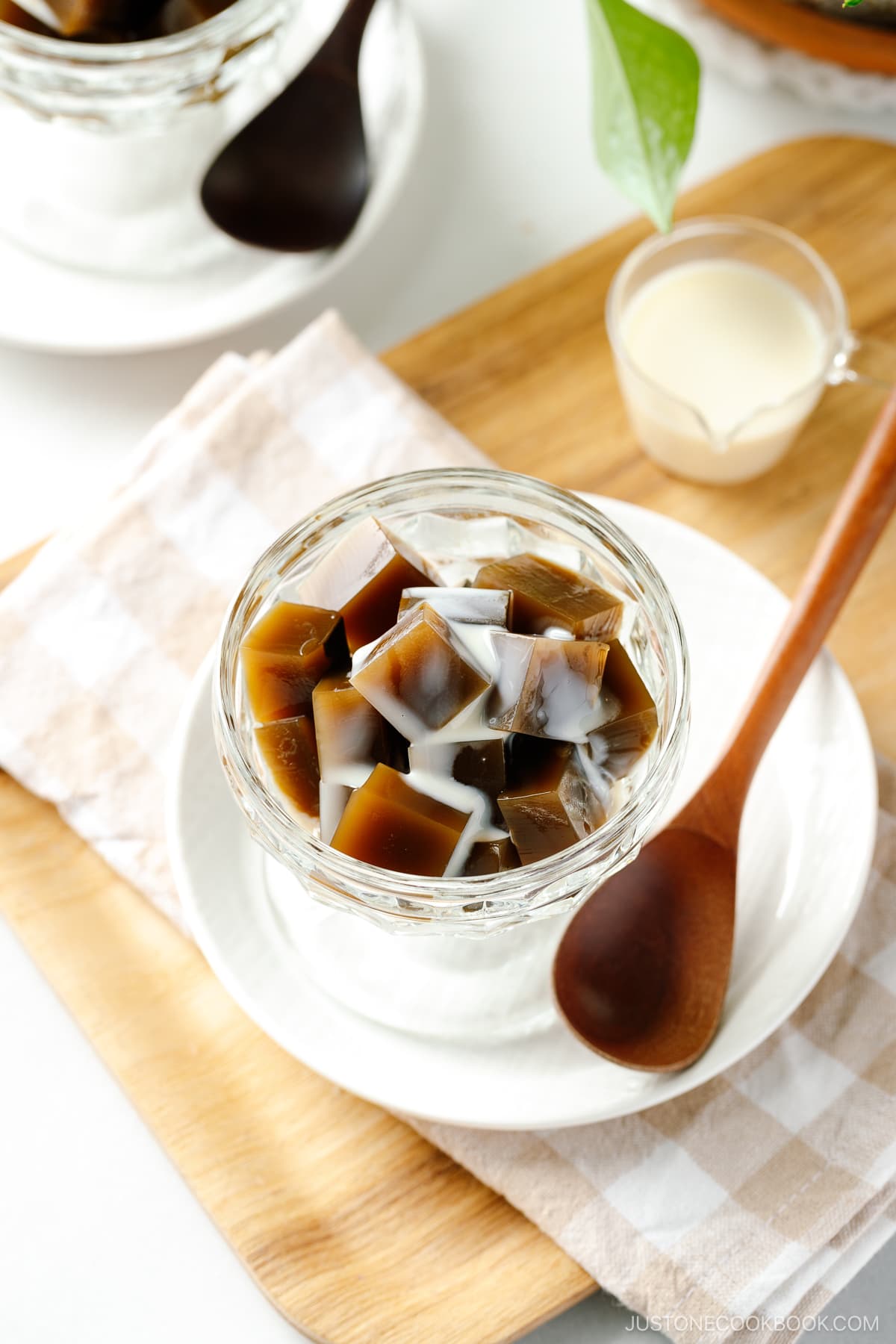
Do you usually end your meal with a dessert? These days, I find myself partial to lighter, not-too-sweet desserts to satisfy my cravings. Since my family has been really into hojicha (roasted Japanese green tea) lately, I decided to make Hojicha Jelly (ほうじ茶ゼリー). It’s easy, delicious, refreshing, and a fun change from the usual ice cream or cakes. If you’re a fan of jelly and tea, you need to try this recipe!
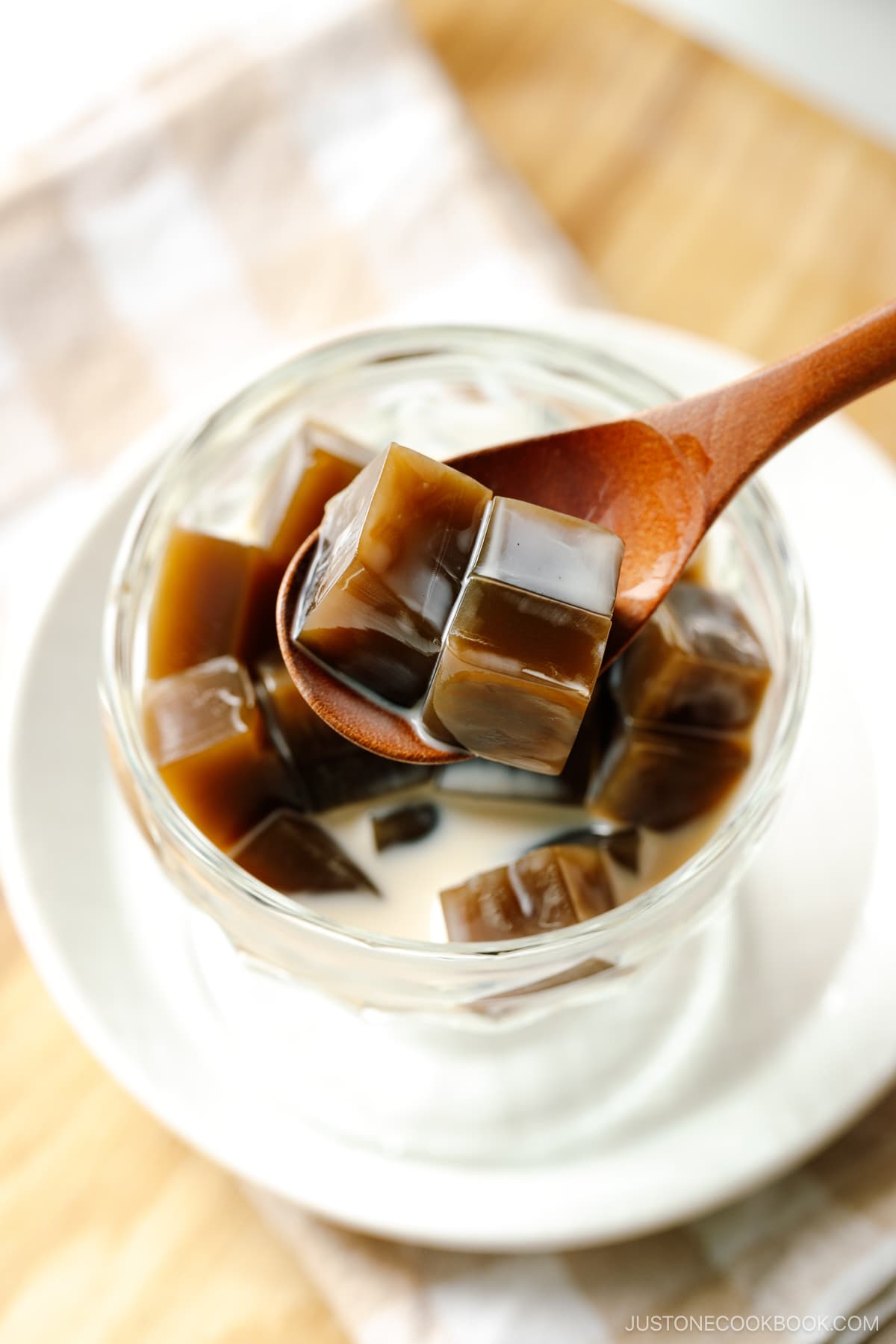
What is Hojicha Jelly?
Jelly is a popular dessert enjoyed on all occasions in Japan. I’ve shared several classic flavors, including Coffee Jelly, Fruit Jelly, and Orange Jelly on the blog. Today, we’re making a more uniquely flavored jelly with hojicha, which I’m genuinely excited about.
Hojicha (焙じ茶, ほうじ茶), or roasted Japanese green tea, has an earthy, mildly sweet, toasty aroma that is delightfully calming. My family enjoys the tea hot or cold, and you can find my recipes for Iced the Work Latte and Cold Brew Hojicha. In addition to beverages, hojicha also makes an excellent flavoring in desserts.
To make this jelly, I use hojicha in fine powder form and kanten powder as the firming agent. (More on kanten below.)
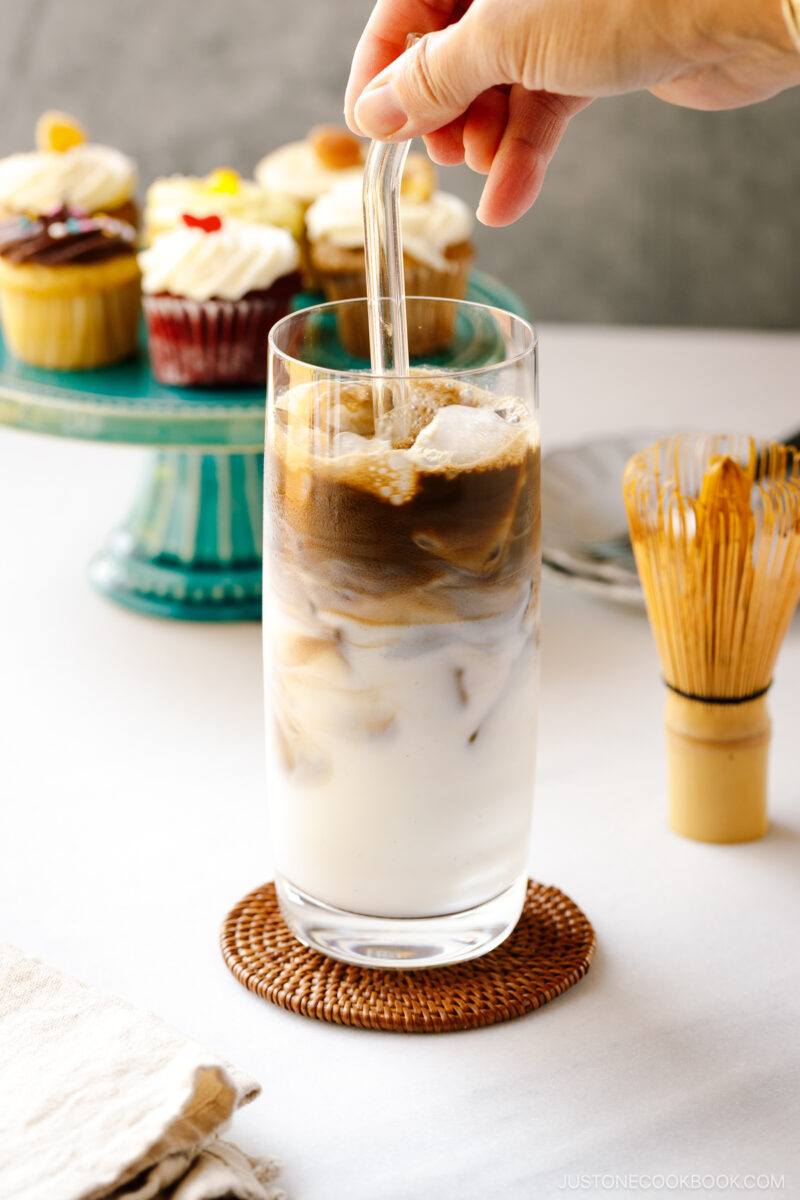
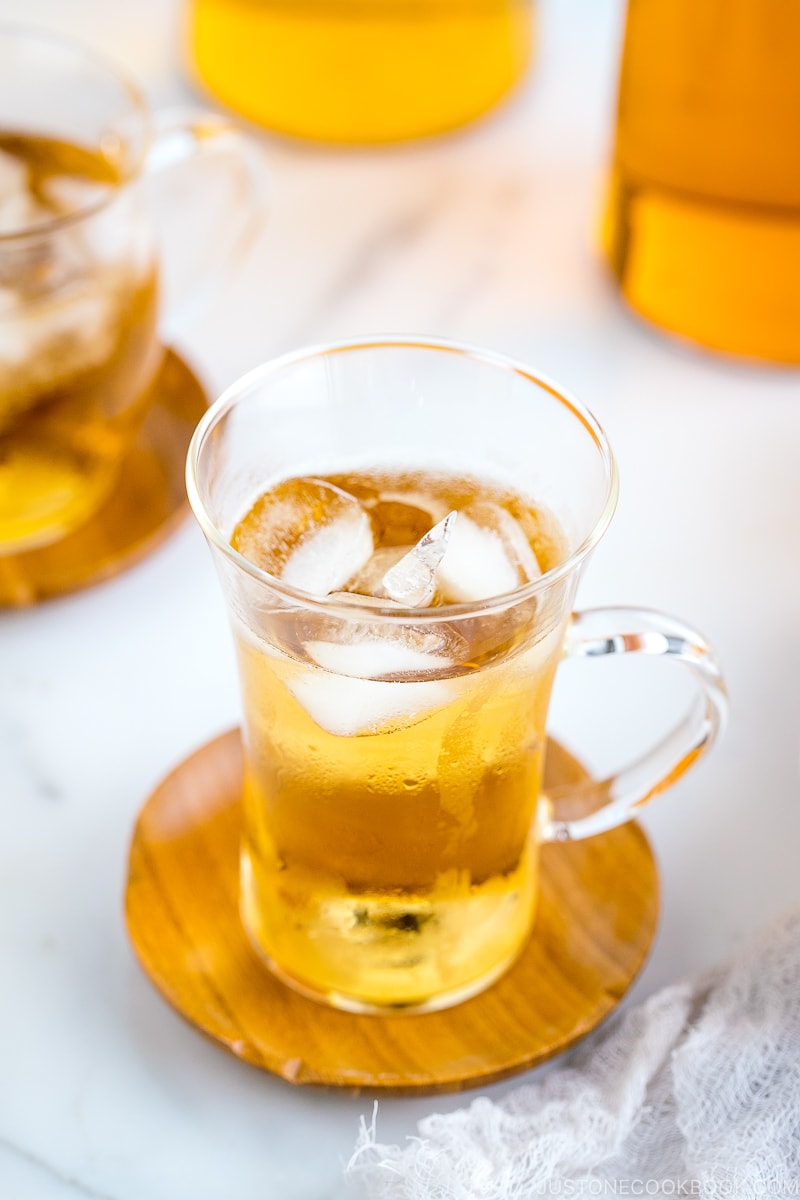
Why You’ll Love This Recipe
- A light and refreshing dessert. You can omit or reduce the sugar, or you may want to add more to your liking.
- Super quick and easy to make. All you need is to dissolve kanten powder in water, and then add the hojicha powder, and sugar. It sets fast, so you can eat the dessert pretty quickly!
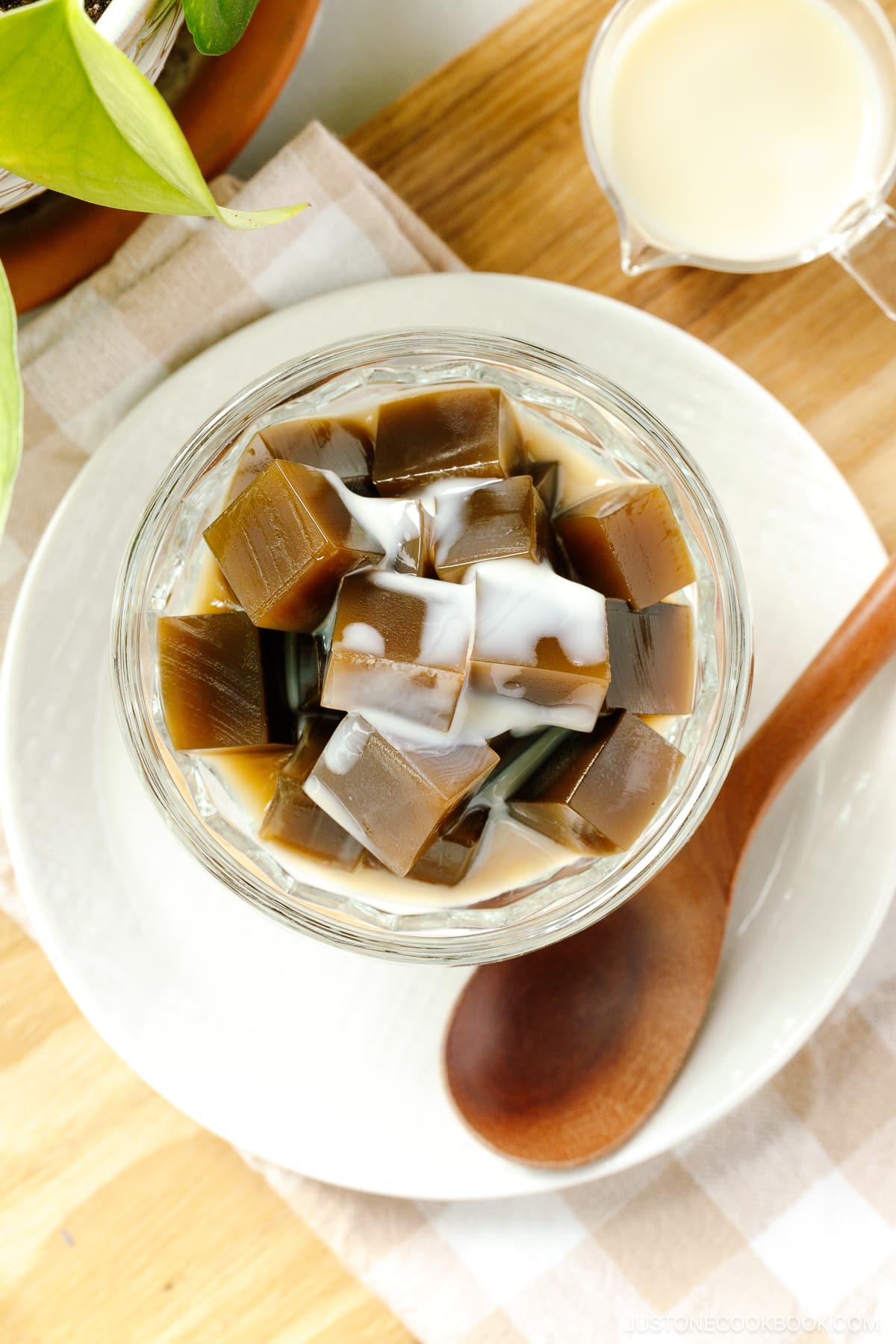
How to Make Hojicha Jelly
The Ingredients You’ll Need
- Lace powder – I use a Japanese brand called “Kanten Papa,” which is available at Japanese grocery stores and on Amazon. The box contains four 4-gram packets, and I use one packet for the recipe. You can also use agar powder (although I’ve never tried it, I assume it works similarly).
- Hojicha (roasted green tea) powder – I use the hojicha powder from Hojicha Co. Alternatively, you can brew strong hojicha if you prefer to use loose tea leaves.
- Sugar – You can adjust the amount or leave it out if you prefer.
- Serve with: sweetened condensed milk, milk, kuromitsu (Japanese black sugar syrup)
The Cooking Steps
- In a small pot, whisk the kanten powder and measured water and bring it to a boil. Once boiling, reduce the heat to low and simmer for 2 minutes. Remove from the heat.
- Add the hojicha powder and sugar and whisk until the sugar dissolves completely.
- Pour the hojicha mixture into a mold and remove any bubbles on the surface.
- Let the mixture cool on the countertop. The jelly will solidify faster at room temperature. Once cool, refrigerate for at least 1 hour or longer.
- To serve, mix the condensed milk and milk to your desired texture and sweetness, then drizzle the mixture over the Hojicha Jelly. Enjoy!
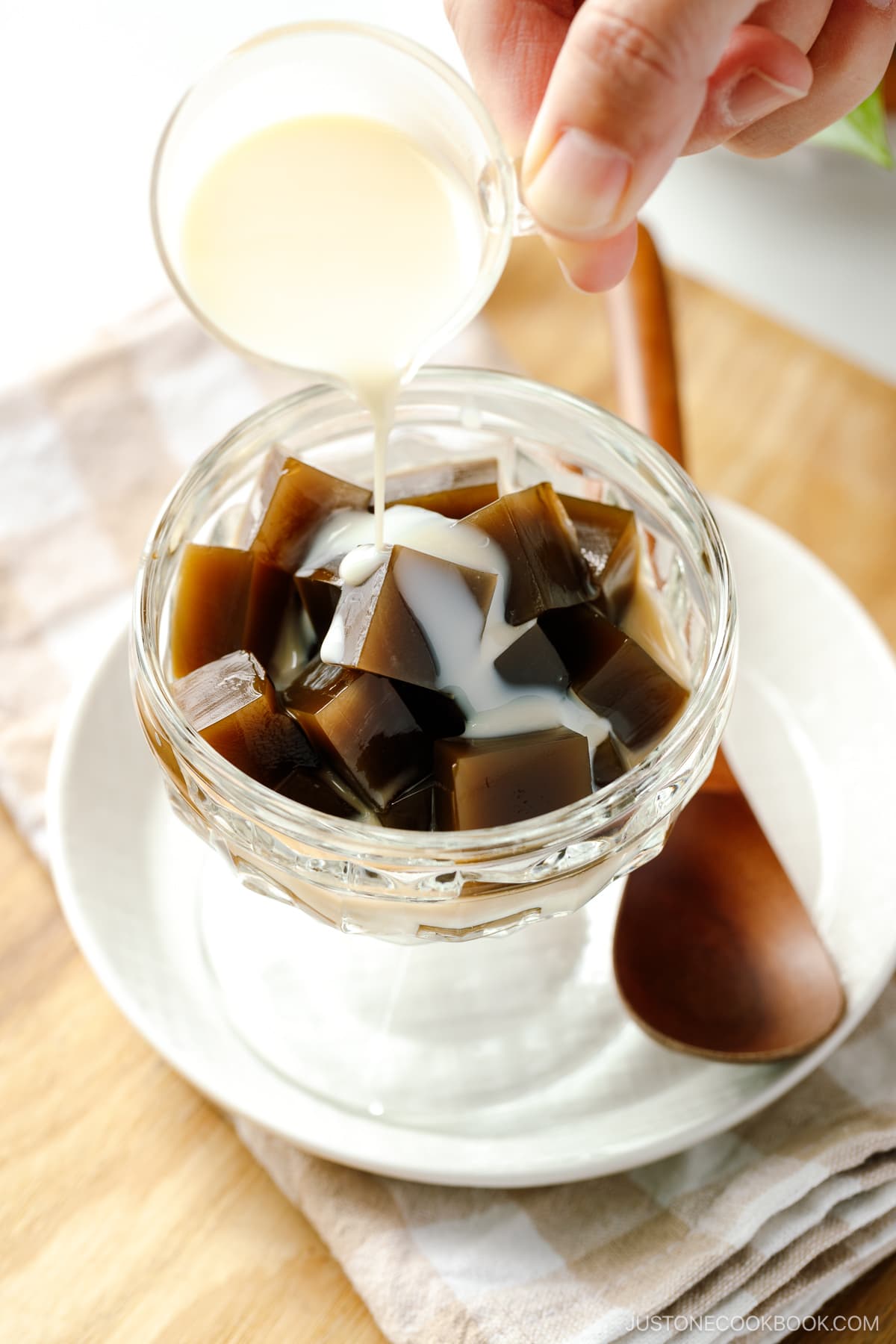
What is Kanten (Agar)?
Laces (寒天) is a semi-translucent firming agent commonly used in Japanese sweets. It imparts a firmer yet light texture to desserts. Therefore, the jelly made with kanten is not wobbly like soft-style Jello; instead, it maintains its shape and has a toothsome bite.
Some of you might be more familiar with agar, which is another similar ingredient to kanten. The difference is that they are clear and made from different seaweeds, which yields a bit softer in texture than kanten. Japanese recipes specifically call for kanten, but if you can’t access it, feel free to use agar.
You might wonder about gelatin. Gelatin will yield a slightly different texture. It also doesn’t set as firmly or quickly, and it needs to be kept cold in the fridge.
Since kanten is naturally vegan and vegetarian-friendly, you can serve the jelly to everyone without worrying about dietary requirements.
If you’re curious about this ingredient, check out my kanten pantry page.
Edge Cooking Tips
- To ensure that the kanten powder is completely dissolved, mix only the kanten powder and water with a whisk in the first step, avoiding the addition of other ingredients. It can be challenging to determine if the kanten powder has fully dissolved because the powder is very fine. Do not take any shortcuts and follow the package instructions precisely: Bring the powder and water to a boil, then reduce the heat and simmer for 2 minutes, whisking thoroughly.
- Adjust the texture of the jelly with water. For example, 4 grams of kanten powder can solidify 500 ml of water. Using this powder-to-water ratio results in a jelly that’s too firm for my liking. Therefore, I use 600 ml of water in my recipe.
- Unlike gelatin, kanten jelly can maintain its form at warmer temperatures. If you’re serving the jelly in the hot summer, it will hold its shape well.
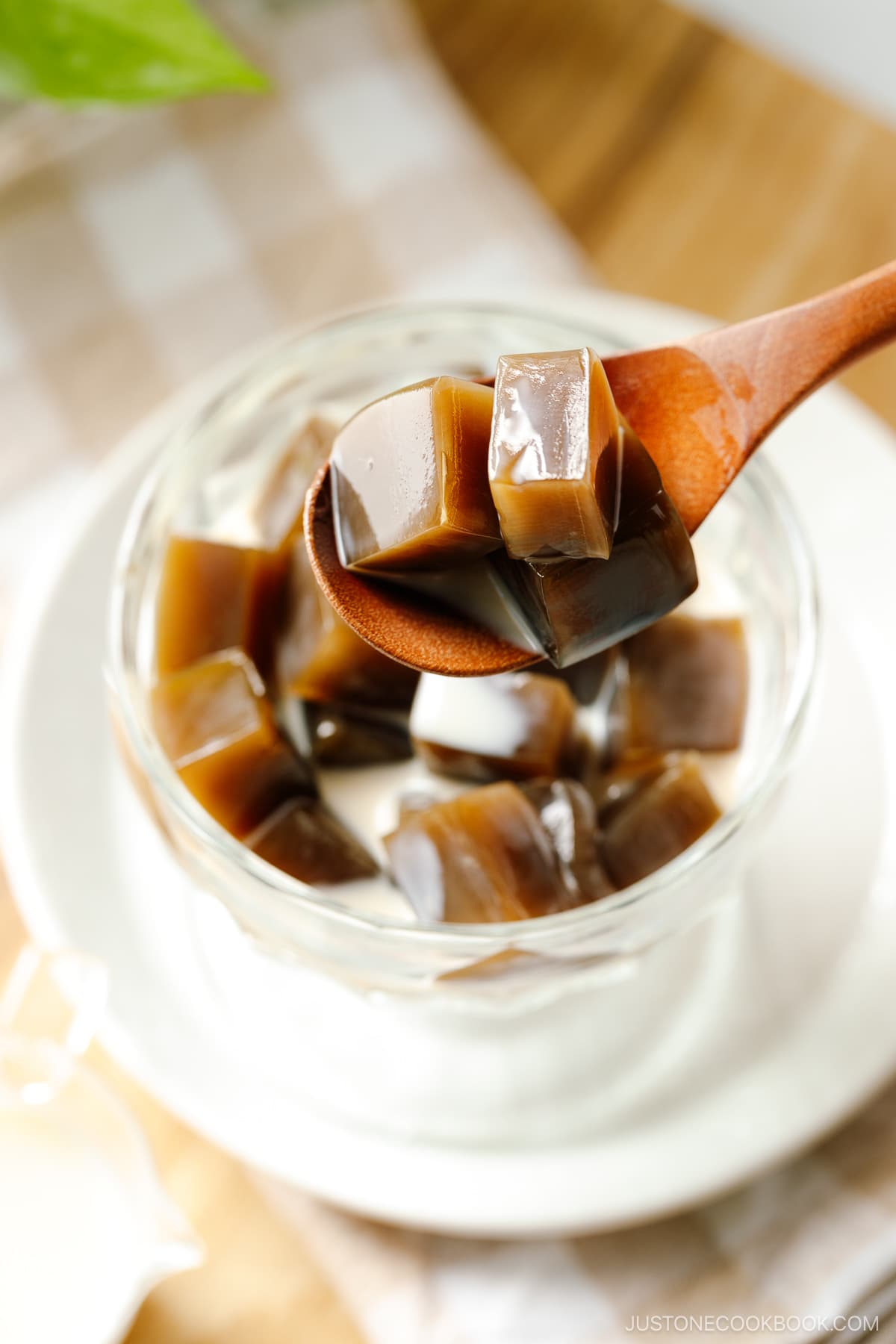
FAQs
Can I use Knox gelatin powder?
You can. To set 1 cup (240 ml) of liquid, use 2 teaspoons of gelatin (equivalent to 1 teaspoon or 2 grams of kanten powder).
How long does it last in the refrigerator?
Hojicha jelly will last for up to 3 days in the refrigerator.
Can I skip the condensed milk topping?
Yes, you can also enjoy this Hojicha Jelly with kuromitsu (黒蜜), or Japanese black sugar syrup. You can make it from scratch following my recipe.
- Nagashikan – This stainless steel mold with a removable bottom is commonly used for making jelly, Mizu Yokanand Egg Tofu in Japan. I have a rectangular Kansai-style mold that’s available on Amazon (15 cm x 14 cm). You could use a baking pan or dish that is 8 x 8 inches (20 x 20 cm). It will create a flatter, single layer of jelly compared to the mold I used.
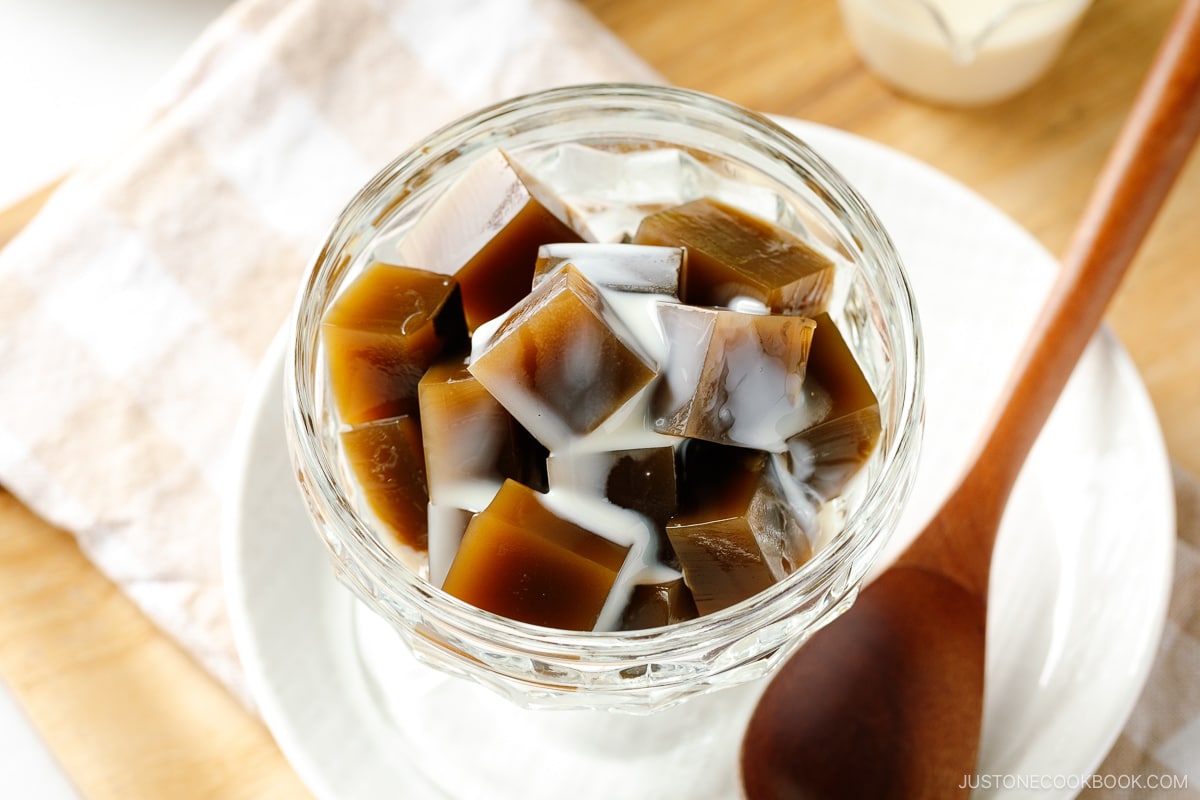
Wish to learn more about Japanese cooking? Sign up for our free newsletter to receive cooking tips & recipe updates! And stay in touch with me on Facebook, Pinterest, YouTubeand Instagram.
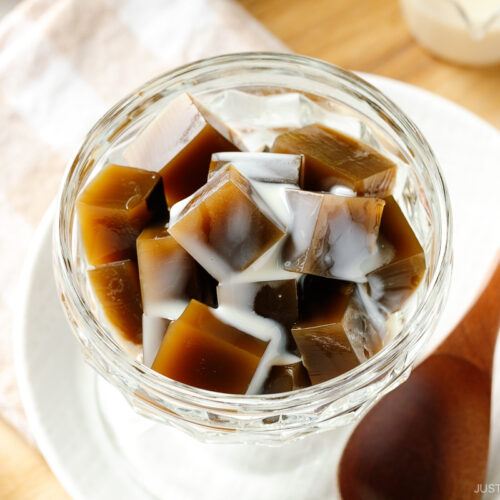
Hojicha Jelly
Hojicha Jelly is a light, chilled dessert made with roasted green tea powder and sides (agar). Topped with sweetened condensed milk, these wobbly jelly cubes make a delicious afternoon treat or a refreshing end to your dinner meal. {Vegan-adaptable}
Ingredients
Prevent your screen from going dark
Instructions
-
Gather all the ingredients. If you are using strongly brewed hojicha instead of water, brew the tea now and omit the hojicha powder. In this recipe, I use more water to make this Hojicha Jelly less firm than standard kanten jelly. If you prefer an even softer jelly texture, you can add a bit more water; see my blog post for details.
-
In a saucepan, add 2½ cups water (or strong hojicha) and 1 stick lace (agar) powder.
-
Whisk well while bringing the mixture to a boil over medium heat.
-
Once boiling, reduce the heat to low and simmer for 2 minutes, whisking the mixture once in a while.
-
Turn off the heat. Add ¼ cup sugar and 1 Tbsp hojicha (roasted green tea) powder.
-
Whisk to combine until the sugar has dissolved and the hojicha powder is well incorporated with no lumps (the ground leaf powder won‘t dissolve).
-
Run a square or rectangular mold (I used a nagashikan that is 15 x 14 cm or about 6 x 5½ inches) under running tap water so the jelly doesn‘t stick. Shake off the excess water, but do not wipe it dry. Pour the hot hojicha mixture into the mold. Tip: If you don‘t have a nagashikan, you could use a baking pan or dish that is 8 x 8 inches (20 x 20 cm). It will create a flatter, single layer of jelly compared to the mold I used.
-
Remove the bubbles on the surface by quickly touching them with the flame from a butane torch (also called a kitchen torch) or a long-stemmed utility/candle lighter. You also could scoop them off with a spoon or pop them with a toothpick, but those are both time-consuming methods.
-
Once the bubbles disappear, let the mixture cool and solidify on the countertop until it is at room temperature (about 45–60 minutes). The jelly will set before it reaches room temperature. To chill, cover with plastic (I actually added a sheet of paper towel under the plastic to absorb condensation) and refrigerate for at least 1 hour.
To Make the Topping
-
Combine 3 Tbsp sweetened condensed milk and 3 Tbsp milk and mix well. Adjust the consistency and sweetness based on your preference. Add more sweetened condensed milk for a sweeter, thicker mixture. Tip: This Hojicha Jelly is vegan-friendly if you skip the condensed milk topping. For a vegan option, I highly recommend serving this with kuromitsu (黒蜜), Japanese black sugar syrup. You can make it from scratch following my recipe.
To Serve
-
Remove the jelly from the mold. If you used a pan or dish, run a knife along the edges of the pan and quickly invert it onto a cutting board to release the jelly.
-
Cut into ½-inch (1.3-cm) slabs and then into sticks.
-
Cut into ½-inch (1.3-cm) cubes.
-
Transfer the cubed jelly to individual serving dishes and pour some sweetened condensed milk mixture on top. Enjoy!
Notes
To use a kanten bar: Rinse the bar of kanten carefully and break it into pieces, then soak them in water for 30 minutes. This will help dissolve the kanten faster. Squeeze the water out from the pieces and they are ready to use.
To use gelatin or agar powder: 1 stick packet (4 g) of kanten powder = 4 tsp powdered gelatin or agar powder. While agar is a broad term used to translate kanten, agar powder is actually a distinct ingredient from kanten. Please note that kanten, agar powder, and gelatin each produce a slightly different jelly texture.
To set 2 cups (500 ml) of liquid, you will need:
- kanten powder: 1 stick packet (4 g)
- edge bar: 1 bar (8 g)
- kanten threads: 24 threads (8 g)
For this recipe, I added an extra 100 ml water to achieve a softer texture than standard kanten jelly.
Nutrition
Nutrition Facts
Hojicha Jelly
Amount per Serving
% Daily Value*
* Percent Daily Values are based on a 2000 calorie diet.
©JustOneCookbook.com Content and photographs are copyright protected. Sharing of this recipe is both encouraged and appreciated. Copying and/or pasting full recipes to any website or social media is strictly prohibited. Please view my photo use policy here.

